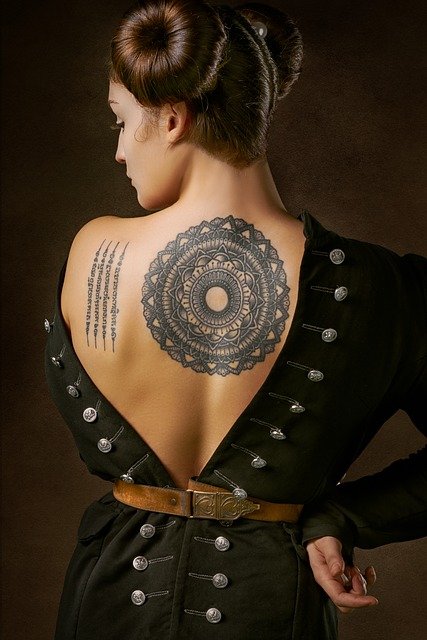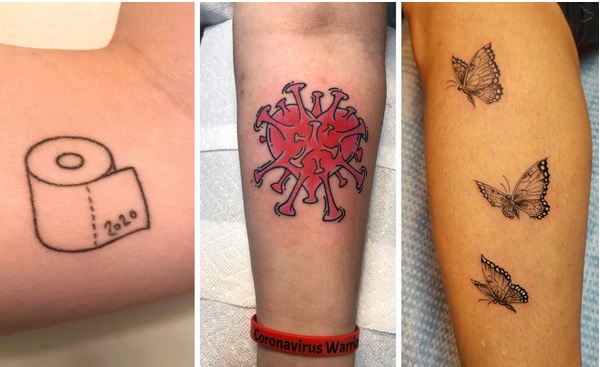The earliest recorded tattoo was found on a Peruvian mummy in 6,000 BC. That’s some old ink! And considering humans lose roughly 40,000 skin cells per hour, how do these markings last? Claudia Aguirre details the different methods, machines and macrophages (you’ll see) that go into making tattoos stand the test of time.
.
Watch:
Glossary
- to flake off – to fall or break away (from something) in small bits or fragments
- to seep – to enter or penetrate slowly
- to engulf – If one thing engulfs another, it completely covers or hides it, often in a sudden and unexpected way
- blister – a painful swelling on the surface of your skin
- crust – the dry covering of a skin sore
- to mitigate – make (something bad) less severe, serious,
- embedded – fixed into the surface of something
- to blast – to make a vigorous attack
True or False?
1. The oldest tattoo was found in Northern America in the 6th millennium BC.
2. People lose approximately half a million skin cells every hour.
3. The first modern tattooing machine was modeled after a machine used for carving designs into a surface (e.g. stationary, wedding rings, tombstones, etc)
4. Whenever a needle is inserted into a part of a body, the smoothing process starts.
5. It takes 2-4 weeks for the outermost layer of the skin to be rebuilt.
6. UV radiation can contribute to pigment breakdown unless one uses sunblock.
ANSWERS:1F; 2F; 3T; 4F; 5T; 6T
Practice Makes Perfect
Put the verbs in brackets into the right tense.
How are tattoos removed?
Dermatologist Joshua L. Fox, director of the Center for Laser and Cosmetic Surgery in New York, explains.
More people than ever (1. get) ……… tattoos today and estimates for the U.S. population indicate that approximately 3 percent now have tattoos. A quick look at any professional basketball game (2. reveal) ……… that more than half the players have body art. Getting a tattoo (3. be) …… never …… safer, primarily because of the use of disposable needles, but people with tattoos and those considering getting one should still remain mindful of the possibility that someday they may no longer want it. Industry experts say that 50 percent of people with tattoos (4. consider) ……… someday ……… having them removed.
The good news is that patients have more options now than ever before when it (5. come) ……… to removing tattoos. New techniques in lasers (6. Improve) ……… results, reduced the risks and broadened the spectrum of patients who can benefit from this technology. Selecting a dermatologist to remove a tattoo is a serious decision. Patients should try to find a specialist with experience and equipment specific for tattoo removal. Good questions to ask of a potential doctor (7. Include) ……. how many tattoo removal procedures they (8. Do) ………. and whether they (9. own) …… their lasers or lease them. Doctors that own their lasers typically do more tattoo removal and as such have more practical experience.
(… )It (10. follow) ………. that you would want to select a dermatologist that has the specific laser necessary for removing your tattoo.
You can check your answers here: https://www.scientificamerican.com/article/how-are-tattoos-removed
ANSWERS: 1. are getting; 2. reveals; 3 has (never) been; 4. will (someday) consider; 5. comes; 6. have improved; 7. include; 8. have done; 9. own; 10. follows
Discuss:
What do you think of some of the Pros & Cons of having a tattoo?
Pros
Tattoos can make you more attractive.
They can cover up your skin.
Getting tattoos may increase your confidence.
Tattoos can help you remember loved ones.
Cons:
Tattoos can be expensive.
Getting tattoos can be painful.
Tattoos will fade over time.
You may choose the wrong design and regret it later.
Explore it more to create your own teaching-learning experience!
While many people are eager to put the ravages of Covid-19 behind them, some prefer to be reminded forever.
Read:
https://www.nytimes.com/2021/07/10/style/would-you-get-a-pandemic-tattoo.html
(1793)






